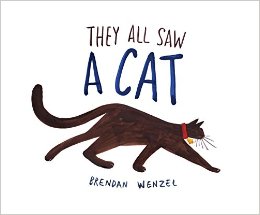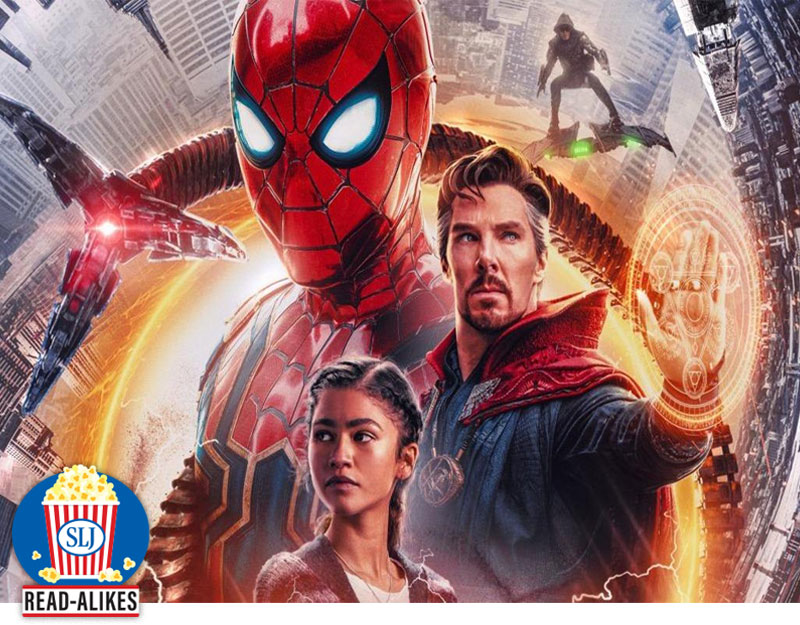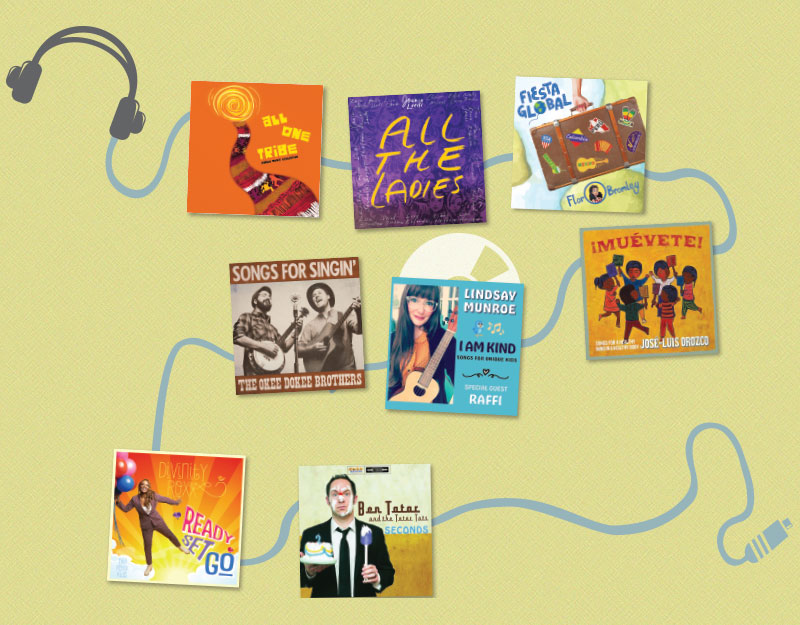Review of the Day: They All Saw a Cat by Brendan Wenzel
 They All Saw a Cat
They All Saw a Cat
By Brendan Wenzel
Chronicle Books
$16.99
ISBN: 978-1-4521-5013-0
Ages 4-7
On shelves now
It’s funny. Unless you’re a teacher or librarian, a grown adult that does not work or live with children will come into very little contact with picture books. Then, one day, they produce a few kids and BLAMMO! They are shot into a world they haven’t visited since they were young themselves. They grab frantically at the classics, discover that a lot of them don’t work with very very young children (since when did Horton Hatches the Egg have so many words?!?), and then occasionally turn to the experts for help. And why? Parents’ reasons are not united on this front. Some read to their kids to instill a love of reading. Others to build little brains. Others to simply fill the long hours of the day. Occasionally a parent will also use a book to teach some kind of a lesson. If the parent is unlucky they will get stuck with a book sticky with didacticism (an unpleasant book that sucks all the joy out of the reading experience). But if they are lucky (or they are in the hands of a capable professional) they might find just the right book, teaching just the right lesson. Here’s an example: Let’s say you wanted to teach a kid empathy or how our perceptions change depending on our own experiences and who we are. How do you show that in 32 pages? Well, you could pick up some cloying, toxic dribble that overuses words like “hugs” and “friendship”. Nine times out of ten, that’s what’s going to happen. Or, if you are a clever parent, you pick up a book like They All Saw a Cat. It looks at first glance like it’s just about a cat. Delve a little deeper and you’ll find it about science and art and perception and empathy. And it does it all with very simple sentences, repetition, and a lot of white backgrounds. Not too shabby. Not too shabby at all.
 “The cat walked through the world, with its whiskers, ears, and paws . . .” In that walking it is seen. It is seen by a child, a dog, and a fox. It is seen by a fish, a mouse, and a bee. It is seen by a bird, a flea, a snake, a skunk, a worm, and a bat. And what’s important is that this “seeing” changes with every creature. For mice and dogs, the cat is perceived through the lens of their own interactions with it. For worms and bats the cat is only visible through the ways in which it moves through space (vibrations through the ground and the ways in which echolocation shape it). By the end we see a hodgepodge cat, a mix of how each animal sees it. Then the cat comes to the water, viewing its own reflection, “and imagine what it saw?”
“The cat walked through the world, with its whiskers, ears, and paws . . .” In that walking it is seen. It is seen by a child, a dog, and a fox. It is seen by a fish, a mouse, and a bee. It is seen by a bird, a flea, a snake, a skunk, a worm, and a bat. And what’s important is that this “seeing” changes with every creature. For mice and dogs, the cat is perceived through the lens of their own interactions with it. For worms and bats the cat is only visible through the ways in which it moves through space (vibrations through the ground and the ways in which echolocation shape it). By the end we see a hodgepodge cat, a mix of how each animal sees it. Then the cat comes to the water, viewing its own reflection, “and imagine what it saw?”
ADVERTISEMENT
ADVERTISEMENT
The book this actually reminded me of the most was that old Rudyard Kipling story “The Cat Who Walked By Himself”. Unlike that tale we never really get this book from the cat’s perspective. Indeed, the cat is often only visible when others see him. The similarity to Kipling comes with the language. That very first sentence, for example: “The cat walked through the world, with its whiskers, ears, and paws . . .” And as in the original art for that story, the cat here is often pictured from the back. There’s a lot of debate about whether or not a book written by one person and illustrated by another can ever be as strong as a book that is written and illustrated by the same artist. They All Saw a Cat makes a fairly strong argument that artist who are also authors are the better way to go. Wenzel’s sentences are so perfectly layered here. If anything, they match the personality of a cat. There aren’t many words, true. But the measured tone is at once soothing and scintillating. I liked how the book broke up the animals. The first three are potential predators. The second three are potential  prey. The final six are strict observers. It also ends perfectly with the best possible sentence. Not all picture books, no matter how beautiful they look, are capable of sticking their landings. This one does.
prey. The final six are strict observers. It also ends perfectly with the best possible sentence. Not all picture books, no matter how beautiful they look, are capable of sticking their landings. This one does.
In this book the publication page (where they tend to describe the artist’s process) gets a little slaphappy. It reads (and I am quoting this precisely), “The illustrations in this book were rendered in almost everything imaginable, including colored pencil, oil pastels, acrylic paint, watercolor, charcoal, Magic Marker, good old number 2 pencils, and even an iBook.” The other day I was listening to a podcast where one of the speakers speculated that including this kind of information in a book changes the adult reader’s perspective. Would I think less of this book if I found out it was done in digital ink? Possibly, though I should note that I was blown away by the art long before I ever turned to see how it was made. And while digital art is great and has its place, I’d like to see the program that replicates what Wenzel’s done here.
 The sheer beauty of the book is what strikes you first when you read it. Consider the two-page spread where on the left-hand side you see the cat through snake vision, and on the right-hand side you see the cat through skunk vision. The snake’s view is a vibrant shock of color, all yellows and reds and blues. The skunk’s in contrast, looks like the soft grainy sepia-tones of an old film. Maybe Casablanca. Put together, side-by-side, the same cat is its own opposite. But if Wenzel were constantly wowing you with eye-popping images that wouldn’t really support the narrative flow. That’s why the pacing of the book is key. Wenzel starts the book out very slowly, with lots of white backgrounds and views akin to what we see as people. The child, dog, and fox all see the cat similarly (though I loved the oversized bell around its neck, indicating the fox and dog’s superior sense of hearing through a visual medium). The fish is the first moment you start to separate from human visuals. The cat’s large, yellow eyes are 80% of the two pages. But it is the mouse’s Basquiat-esque view of the cat that steals the show. The red background, and the cat all teeth and claws, and terrifying eyes is a far cry from the cuddly creature at the start of the story. It’s also the moment when the child readers come to realize that perception is personal.
The sheer beauty of the book is what strikes you first when you read it. Consider the two-page spread where on the left-hand side you see the cat through snake vision, and on the right-hand side you see the cat through skunk vision. The snake’s view is a vibrant shock of color, all yellows and reds and blues. The skunk’s in contrast, looks like the soft grainy sepia-tones of an old film. Maybe Casablanca. Put together, side-by-side, the same cat is its own opposite. But if Wenzel were constantly wowing you with eye-popping images that wouldn’t really support the narrative flow. That’s why the pacing of the book is key. Wenzel starts the book out very slowly, with lots of white backgrounds and views akin to what we see as people. The child, dog, and fox all see the cat similarly (though I loved the oversized bell around its neck, indicating the fox and dog’s superior sense of hearing through a visual medium). The fish is the first moment you start to separate from human visuals. The cat’s large, yellow eyes are 80% of the two pages. But it is the mouse’s Basquiat-esque view of the cat that steals the show. The red background, and the cat all teeth and claws, and terrifying eyes is a far cry from the cuddly creature at the start of the story. It’s also the moment when the child readers come to realize that perception is personal.
An interesting criticism of this book is linked precisely to the more science-y aspects of the text. One of the commenters on a blog post I wrote, that included this book, said that, “I desperately wanted some nice science-y back matter to tell us how and why different animals see the cat the way they do. Sure, we can go OH, this animal must be colorblind! This animal ‘sees’ by sonar! But c’mon, throw us an edu-bone here. It felt like such a missed opportunity.” This is an interesting note. We’ve grown used to useful backmatter in this post-Core Curriculum world of ours. Would this book have been stronger if it had contained a science element to it? Yes and no. It would have been a real boon to teachers, you betcha, and probably to perceptive parents who could have turned it into a lesson for young readers. If I had to guess I’d say the reason it wasn’t done may have had something to do with the fact that Wenzel is mixing his fact and fiction here pretty closely. Each animal is “seeing” as it would in the wild, but that is not to say that the art is by any means scientific. The cartoonish quality to the animals (no better exemplified than in the mouse’s bulbous eyes) doesn’t hold up to close scrutiny. I would have very much liked notes on the accuracy of the art, but I can understand the fear of asking the reader to take the work too seriously. I don’t necessarily agree, but I understand it.
 How do you discuss this book with kids? Well, you might read it to them, start to finish, and then ask them which picture shows what the cat really looks like. When they select (some will go with the human view but I’ve no doubt a couple will prefer the dog or bird p.o.v.s) you then tell them that actually all the pictures in this book are true. And if you really want to blow their little minds, you tell them that there’s a good chance that the way you see the world isn’t the same way the person next to you does. Everyone, everywhere sees the world different from his or her neighbor. Is it any wonder we have problems? The solution is to try and see things from another person’s view. Now, if the kids think you’re speaking literally or figuratively, it doesn’t really matter. You’ve planted the seed. Or, rather, the book has.
How do you discuss this book with kids? Well, you might read it to them, start to finish, and then ask them which picture shows what the cat really looks like. When they select (some will go with the human view but I’ve no doubt a couple will prefer the dog or bird p.o.v.s) you then tell them that actually all the pictures in this book are true. And if you really want to blow their little minds, you tell them that there’s a good chance that the way you see the world isn’t the same way the person next to you does. Everyone, everywhere sees the world different from his or her neighbor. Is it any wonder we have problems? The solution is to try and see things from another person’s view. Now, if the kids think you’re speaking literally or figuratively, it doesn’t really matter. You’ve planted the seed. Or, rather, the book has.
Let us do away with the notion of “cat people” vs. “dog people”. This book is for “people”. End of sentence. And if I got a little crazy in my first paragraph here, filling you in on my view of world peace via picture books, you’ll understand when you read this book. That tired old phrase to “walk a mile in someone else’s shoes” makes no sense to a kid. But travel a page through another animal’s eyes? There’s never been a better fictional picture book that allows you to do this. If we all see something as simple as a cat this differently, what else might we not see the same? It’s a treat to eye, ear, and mind, but don’t forget. We’re all going to see this book through our own lenses. What will your kids see when they look at it? Only one way to find out.
On shelves now.
Source: Galley sent from publisher for review.
Like This? Then Try:
- Seven Blind Mice by Ed Young
- Elephant in the Dark by Mina Javaherbin
- The Sound of Colors by Jimmy Liao
Professional Reviews:
- A star from School Library Journal
- A star from Publishers Weekly
- Kirkus
- The Boston Globe
- The Washington Post
Other Mentions:
Videos:
Filed under: Best Books, Best Books of 2016, Reviews, Reviews 2016
About Betsy Bird
Betsy Bird is currently the Collection Development Manager of the Evanston Public Library system and a former Materials Specialist for New York Public Library. She has served on Newbery, written for Horn Book, and has done other lovely little things that she'd love to tell you about but that she's sure you'd find more interesting to hear of in person. Her opinions are her own and do not reflect those of EPL, SLJ, or any of the other acronyms you might be able to name. Follow her on Twitter: @fuseeight.
ADVERTISEMENT
ADVERTISEMENT
SLJ Blog Network
Happy Poem in Your Pocket Day!
Family Style: Memories of an American from Vietnam | Review
Parsing Religion in Public Schools
Environmental Mystery for Middle Grade Readers, a guest post by Rae Chalmers
ADVERTISEMENT








I agree that this has loads and loads of Caldecott potential.
That being said the book hasn’t worked as a read aloud as well as I thought it might. I think this book is an example of a better lap read than large group read aloud. The book benefits from close inspection of the details and more lingering on spreads than a traditional read aloud allows for. The Wenzel illustrated One Day in the Eucalyptus, Eucalyptus Tree (Daniel Bernstrom) on the other hand is a fantastic read aloud and I wouldn’t be surprised if it snags an EB White read aloud award this year.
Getting back to They All Saw a Cat. I would argue that in this “post-common core world” the lack of backmatter is, in fact, an invitation to inquiry. Why should Brenden and Chronicle do the work for these curious kids? Interested in how skunks, or bats, or bees really see the world? Ask your librarian to help you find resources that can provide answer these questions.
I agree with Eric about the book inviting inquiry. It would also encourage discrimination between emotional and physical differences in “seeing”. Plus there is an artistic freedom in the pictures , I think. I have never seen solely though vibrations, but I would imagine that a worm wouldn’t feel an upside down cat but four circles where the feet are.
It’s a wonderful book.
“Artistic freedom”. That’s the phrase I was unable to come up with when I wrote this review. Thank you!
One more comment on this. Of course, so many things affect our vision of the world in addition to emotions and our physical bodies. Learning, social context, expectations…(For instance, researchers found that if they inserted the work “chack” into an article on banking most people saw it as “check”, in an article on poultry, it was seen as “chick”.) As one anthropologist put it, “There is no such thing as immaculate perception.” Doesn’t it make the world an interesting place?
I have long been a fan of Brendan Wenzel’s art, and this book is absolutely stunning and well done on so many levels.
I think it speaks to a young child’s sense of curiosity and wonder too, so though I’m a huge fan in general of backmatter, it works just as well w/o it in my opinion–making it more mysterious and impressionistic vs. scientifically accurate. I think it would be a much different book if it were all about the science behind the seeing, but it explores perspective, point of view, color in such a wonderfully, whimsical way.